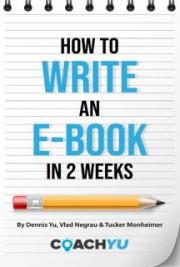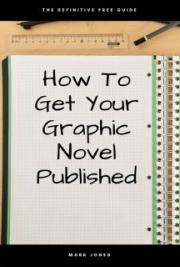BIG-PROFIT, S.M.A.L.L.TM REPORT BUSINESS
---------------
How To Turn 7-15 Page Small Reports Into A Six-Figure Information Empire
By Jimmy D. Brown Benchmark Publishing, LLC
NOTICE: You DO Have the Right to Reprint or Resell this Report!
You Also MAY Give Away, Sell or Share the Content Herein
© Copyright 2007 Jimmy D. Brown
ALL RIGHTS RESERVED. You may sell or give away this report as long as it is not altered in any way, falsely misrepresented or distributed in any illegal or immoral manner.
DISCLAIMER AND/OR LEGAL NOTICES:
The information presented herein represents the view of the author as of the date of publication. Because of the rate with which conditions change, the author reserves the right to alter and update his opinion based on the new conditions. The report is for informational purposes only. While every attempt has been made to verify the information provided in this report, neither the author nor his affiliates/partners assume any responsibility for errors, inaccuracies or omissions. Any slights of people or organizations are unintentional. If advice concerning legal or related matters is needed, the services of a fully qualified professional should be sought. This report is not intended for use as a source of legal or accounting advice. You should be aware of any laws which govern business transactions or other business practices in your country and state. Any reference to any person or business whether living or dead is purely coincidental.
Introduction
Special Report – PRINT THIS OUT FIRST
5 Steps To A Big-Profit, S.M.A.L.L.™ Report Business By Jimmy D. Brown, Author of
Small Reports Fortune™
I must warn you up front - if you continue reading this report, then you may not get much sleep tonight.
I know, I know, everyone seems to have some kind of “
earth-shattering” revelation to share that’s gonna “
changethings forever”.
Earth-shattering revelations aren’t what they used to be, huh?
To be truthful, most so-called “ helpful” information should come with an advisory warning label affixed to let you know you’re about to get 3 pages of fluff (fluff being useless, rehashed information) and about 10 pages of sales copy.
Know what I mean?
So, what makes this report different? What makes my claim credible?
In a word –
PROOF.
You may or may not know me, but I’ve been giving away free content online for a LONG time. (Since 1999) I’ve given away more useful content than most so-called “ marketers” have been peddling in their paid products.
Ask around. Search Google.com. Or, just read this report and find out for yourself.:
Yes, I will ask you to consider purchasing my
Small Reports Fortune™course at the close of this report.
Yes, I will GIVE you some solid nuggets of information that you can use without forcing you to buy anything.
If you find that offensive, then there’s a little [X] in the upper right hand corner of your screen that you can click on to close this document.
But, if you want to learn something that really is going to be beneficial to helping you make money online with tiny 7-15 page small reports, let’s get started…
The Concept Of S.M.A.L.L.™ Reports
Before I share the 5 steps in this incredibly profitable business model, let me first explain the concept.
Here’s the idea –
Write a small report (approximately 7-15 pages) to sell online and, over time, grow that singular small report into a huge information empire consisting of reports, full-length products, membership sites, high-ticket premium products, e-coaching and more.
Everything hinges around being able to write small, 7-15 page reports.
Throughout EVERYstage of this business, you will NEVER be required to write anything more than 7-15 pages.
Stop now and re-read that. That statement is going to keep you up half the night as you consider how realisticand reasonableit is for you to accomplish in light of everything I’m going to share with you from this point on.
⇒ As you grow your business into
full-length products, you’ll never write anything more than 7-15 pages!
⇒ As you grow your business into a
membership site, you’ll never write anything more than 7-15 pages!
⇒ As you grow your business into
high-ticket products, you’ll never write anything more than 7-15 pages!
⇒ As you grow your business into
premium-priced e-coaching, you’ll never write anything more than 7-15 pages!
It starts with a 7-15 page small report and - despite the numerous streams of higher-priced income you’ll develop in this model-- you'll never have to write anything more than 7-15
pages. Remarkable, huh?
Now, it is with that foundation that I want to quickly share my system with you “5 Steps To
A Big-Profit, S.M.A.L.L.™ Report Business”…
I use the acronym “S.M.A.L.L.” to illustrate the five steps. Each letter of the word SMALL (S – M – A – L – L ) represents one of the five steps…
S – SELECT a market.
M – MEASURE interest.
A – AUTHOR a report.
L – LOOK to repeat.
L – LEVERAGE your assets.
We’re going to briefly look at each of these steps so you can get a good overview of how to build a successful “small report” business.
I’m ready if you are.
5 Steps To A Big-Profit, S.M.A.L.L.™ Report Business
Let’s begin with the “S” of the
S.M.A.L.L.™ Report Business Modelwhich is...
Step 1 -
SELECT A Market.
The first step in this process is to “ select a market”. That is, you’ll want to identify a group of people that you want to sell to – a “ target audience”. A “market” is simply a body of existing or potential buyers for specific goods or services.
Just a few of the more popular markets include –
• Weight loss
• Home business
• Relationships
• Parenting
• Retirement
• Personal Growth
• Wedding and Marriage
• Computers and Technology
• Motivational
• Leadership
The list could go on and on, but I think you get an idea.
You want to choose a “market” that you’ll center your small reports business on. If you’ve been following events over the past couple of years, then you know that “ niche” marketing has been the big craze. People have been (and still are) scrambling all over to find these tiny, untapped niches (Ex. Teaching a parrot to talk) to create businesses around.
I’ve got two words for this kind of business model –
Big mistake!
Let me caution you that while that is an approach that certainly works, there is another strategy to use that I have found to produce even greater results.
Here it is:
Instead of identifying niches, identify target markets.
Let me say that again: instead of identifying niches, identify markets.
Here’s the common practice...
1. Identify a red-hot niche with hungry customers.
2. Create a product that's highly sought after by those customers.
3. Setup a web site to sell the product.
4. Rush off to buy pay per click listings and Google Adwords® to promote the site.
5. Find another red-hot niche and repeat the process.
Now, that’s a good plan. There’s no doubt that it’s a profitable system.
But, it’s not a great plan.
Really, that system is setup for leaving money on the table, for just throwing away money that you could be depositing into your bank account.
So, what is a great plan?
Selecting a market so you can generate multiple sales per customer.
It’s very similar to the way most people approach niche marketing, with a critical extra “profit-boosting” step...
1. Identify a market with hungry customers.
2. Create a product that's highly sought after by those customers.
3. Setup a web site to sell the product.
4. Rush off to buy pay per click listings and Google Adwords® to promote the site.
5. Create additional related products to sell to your existing customer and lead lists.
6. Find another market and repeat the process.
Do you see what I added there? There’s an extra step there that is so critical to your bottom line, and that is “Create additional related products to sell to your existing customer and lead lists.”
1. You’ve already got customers who have bought a product from you, so instead of moving on to other “niches” where you have to go out and find additional customers, why not offer your customers additional, related products before you move on?
2. You’ve already begun building a lead list, why not offer them additional, related products before you start looking for other “niches”?
If a customer bought a product from you, then they’ve told you –
“This is a hot button with me. This is something I’m interested enough in to spend money. This is something that is important to me at this point in time.”
So, you simply feed them other offers that are highly related to the one that they’ve already identified as being important to them.
Instead of looking for tiny “niches”, you look for larger markets and feed them multiple, highly related offers.
The idea here is to find customers who make repeated purchases from you.
And when you take into consideration what we’ll be talking about momentarily -- creating 7-15 page reports as these various “offers” -- it really is an easy thing to accomplish.
But, we’ll get to that.
--------------------------------------
NOTE: In the Small Reports Fortune™ course, the first thing I do is teach you how to choose the right market by sharing 3 simple rules for finding markets full of eager-beaver, hungry buyers; plus I list 20 highly-profitable markets that are proven to generate revenue in the information business.
--------------------------------------
First step,
“select a market”. Then we have the “M” of the
S.M.A.L.L.™ Report Business Model…
Step 2 -
MEASURE Interest.
After you’ve determined what “
market” you want to target, it’s simply a matter of finding out what to offer them.
If you want to put things into a practical setting, it’s time to get some ideas for what topic you’ll be writing about in your first 7-15 page small report.
You’ll want to “measure interest” among your market. Take their temperature. Identify the current hottest topic of interest.
Basically, I have three “diagnostic” questions that I use in measuring interest in any particular market that you can put to the test yourself for your market...
1. “What do they want?”
It all begins and ends with the persons that make up your “market”. What do THEY want? Based on your own history in the market, researching the market or inquiring among existing individuals in the market, it should be easy to determine the wants and needs of the group as a whole. (More on this in a minute).
2. “What is available?”
Next up, you want to determine “what is available”. In other words, are there existing resources in place that are being sold to this market that you’ll be directly competing against? What do they offer? What’s good about their offer and what’s not so good?
3. “What can I offer that’s different?”
And, thirdly, “what can I offer that’s different?” Is there something missing from existing resources? Something that could be explained better? Are more ideas and examples needed? Is there new information available? Can you package, present or position content in a more user-friendly way? Are their tiny segments that could be broadened?
By focusing on these three diagnostic questions, you’ll be able to measure the interest of your market and determine an “in-demand” topic to write about in your first 7-15 page small report.
Now, before we move on, I do just want to give you a quick way to find ideas to write about. You’ll still need to use these three diagnostic questions, butthiswill give you something towards which you can direct the questions
One of my favorite places to brainstorm ideas is
Amazon.com®. Amazon.com® is the web’s largest bookstore.
It’s also a community center for new product ideas.
I use it as one of my brainstorming resources. Again and again I visit this site to come up with topics to write about.
What makes Amazon.com® so useful as a research tool for getting new ideas is their searchable database of books. There are thousands of great ideas lurking in there if you just know how to use it.
And that’s what I’m here for. :
I’m going to show you how to find hot product ideas with Amazon.com® anytime you want.
It’s really a matter of three simple steps …
STEP 01: Decide Upon A Broad Category . When brainstorming ideas, you must begin with a broad category to work with. Some examples might be: weight loss, marketing, dating, travel, baseball.
Basically, whatever “market” you’ve chosen.
As an example for this article, I’m going to choose GOLF.
STEP 02: Search Amazon’s® Database. After picking your broad topic to research, it’s time to visit Amazon.com.
Specifically, you’re going to SEARCH their database of books they are selling.
Upon arriving at their site, locate their SEARCH form. At the time of this writing, it was in the upper left hand corner of their main page. Pull the menu down and select BOOKS from the options.
In the space provided, type in whatever broad category you chose. I’d type in “Golf”. (You don’t need quotation marks)
If you did indeed start with a broad category, then hundreds (or even thousands) of book listings should appear as a result of the search.
STEP 03: Brainstorm Ideas From The Listings . Let the brainstorming session begin! Now it’s time to look at the books that are listed and write down as many possible ideas as you can find.
Look for the different TYPES of books written aboutthe subject, identifying different THEMES, STYLES and SUBCATEGORIES.
Let’s look at an example …
When I searched for “Golf”, I was able to immediately spot dozens of great ideas. Here are a handful …
1. Becoming a Better Golfer. There are many golf books available in this area, covering everything from “A-Z of Golf Shots” to specific topics such as “Improving Your Short Game”. There were lots of different themes from “learning to break 100” to “shaving 10 shots off your score” to “7 shots that will change your golf game forever”.
2. Guides to Golf Courses.
Again, we have many different ideas here. Specific golf guides like “Florida golfing”, “golfing in Tennessee” and “golfing the Robert Trent Jones trail” appear, as well as books on “the best golf courses in America”, “best kept secrets: great golf courses you’ve probably never played”, and “golf vacation guides”.
3. Profiting from Golf.
More ideas pour in with “opening a golf repair business”, “becoming a golf retailer”, “learning how to caddy” and “buying & selling used golf clubs”. What about “running an online golf auction”, “organizing a golf tournament for profit” or even “writing information products about golf”!
4. Golf and Business.
There are millions of dollars in business deals negotiated on the golf course every single year. And there are books available to teach folks how to get it done. “How to negotiate business deals during golf outings”, “Legal golf tax deductions for businesspeople”, and “business seminars and golf: how to mix training and fun for maximum profit” are just a few more ideas worth exploring.
5. Golf Products.
My, my, my there are so many ideas floating around in here! Everything ranging from reviews of the latest golf equipment to ratings of golf courses to discounts on golf packages. Resource guides to finding the best deals on golfing products, how to negotiate discounts, and how to find the best products for your specific golf game also come to mind as product ideas.
One Broad Category (Golf)
+ Amazon.com Searchable Database of Books = 28 Potential Product Ideas
See how easy that was? I found TWENTY-EIGHT potential small report ideas (and there were MANY MORE that I didn’t mention in this report) from a simple brainstorming exercise using ONE “idea hangout”.
Not bad, eh?
--------------------------------------
NOTE: In the Small Reports Fortune™ course I give you an ENDLESS SUPPLY of ideas for every small report you’ll ever write including: 7 idea “hangouts” where you can find dozens of ideas, 27 different categorical ideas for your next small report and 158 different title topics you can modify for your own use in generating ideas! I even cover different “kinds” of small reports to create like “how-to”, “faq”, “first year” and so forth.
--------------------------------------
So, you measure interest and then on to step 3, the “A” of the
S.M.A.L.L.™ Report Business Model…
Step 3 -
AUTHOR A Report.
After you’ve selected your market and measured interest you should have a topic for your first small report.
So, now it’s time to “
author” your report. It’s time to write that first one. Now, what I want to engrain in your head concerning this small report is simply this …
It only needs to be 7-15 pages long.
Now, for obvious reasons (I.E. I want you to buy my Small Reports Fortune™course :), I can’t give you my proprietary system for writing these small reports. That’s reserved for my paying customers only.
I couldn’t, ingood conscience, giveyou privileged information that others havepaid me to receive.
But, I do want to give you a simple strategy that will dramatically help you write easier, faster and better as you create these small reports.
It is simply this –
Compile and refer to a “Starter SwipeFile”
One of the things that you’ll find invaluable to you as an information writer is what I have labeled as a “starter swipe file”.
DEFINED: “Starter Swipe File”
A “starter swipe file” is a collection of ideas to write about written in a single sentence formatted template.
Example: One of the biggest reasons people fail in ___ is ___.
I could use this starter sentence to create paragraphs of content about virtually any topic in the world –
One of the biggest reasons people fail in marketing is...
One of the biggest reasons people fail in dieting is...
One of the biggest reasons people fail in reaching goals is...
One of the biggest reasons people fail in homeschooling is...
One of the biggest reasons people fail in relationships is...
These starter sentences allow me to quickly find something to write about anytime I want to build content into a document –
1) At the beginning as I outline it,
2) During the writing process as I struggle for ideas, or
3) At the conclusion of the document when I find portions of the document need more information.
Do you see how this works?
I encourage you to compile a set of these “starter sentences” – templates – that you can plug in anywhere you want to kick-start your writing.
I use these all the time andit makesmywriting somuch faster, easier and, ultimately, better!
The writing part of this business is obviously the most important piece of the puzzle. If you don’t write your small reports, then you don’t sell them. And that brings the profit to a grinding halt.
That’s why I have done something in Small Reports Fortune™that I simply don’t see available in other courses (and certainly is lacking in comparison to the details I provide) and that is this –
I explain – in greatdetail – HOWto write information products.
It’s a gap in almost every course I’ve ever seen … they leave the writing part of information product creation for you to figure out on your own.
Not in this course!
• If you are NOT a “writer”, then the instruction in this course is going to be an invaluable resource in helping you quickly crank out these small reports. You will *literally* refer to it again and again and again!
• If you ARE a “writer”, then the instruction in this course will make the process of writing these small reports easier, faster and better than anything you’ve done so far. If I’m wrong, I’ll give you a refund.
I’ve gone to great lengths to share my own proprietary system of “How To Write P.A.G.E.S.™ Of High-Demand Content”. There’s an entire chapter and audio session on the topic.
PLUS, I’ve included a never-before-seen report entitled, “How To I.M.P.R.O.V.E. Your Information Writing”! In this 24-page report, you'll be given 7 incredible techniques for writing faster, easier and better! Included in this invaluable reference ( this is *literally* worth more
than the c ost of the course by itself!) are 9 kinds of "content enhancers”, 50 different idea catalyst templates, dozens of writer prompts and invaluable writing techniques to help you improve boththe quantityand quality ofyour finished product.
Sorry, I’m getting ahead of myself.
I’m just so excited to teach you about this concept of creating small reports that I want to tell you everything I’ve put together in one breath of air. I’m hyperventilating here. :
Anyway, back to the five steps…
Up next we have the first “L” of the
S.M.A.L.L.™ Report Business Modelwhich is...
Step 4 -
LOOK To Repeat.
Remember when I told you earlier about choosing a “market” so you could make multiple, related offers? That’s what this step is all about.
Let’s face it, selling one small report for $15-$20 isn’t going to make a lot of money. After all, you’d have to sell 1,000 copies just to make $20,000.
But …
What if you created a
second 7-15 page report and sold it to your existing customers and leads?
What if you created a third 7-15 page report







